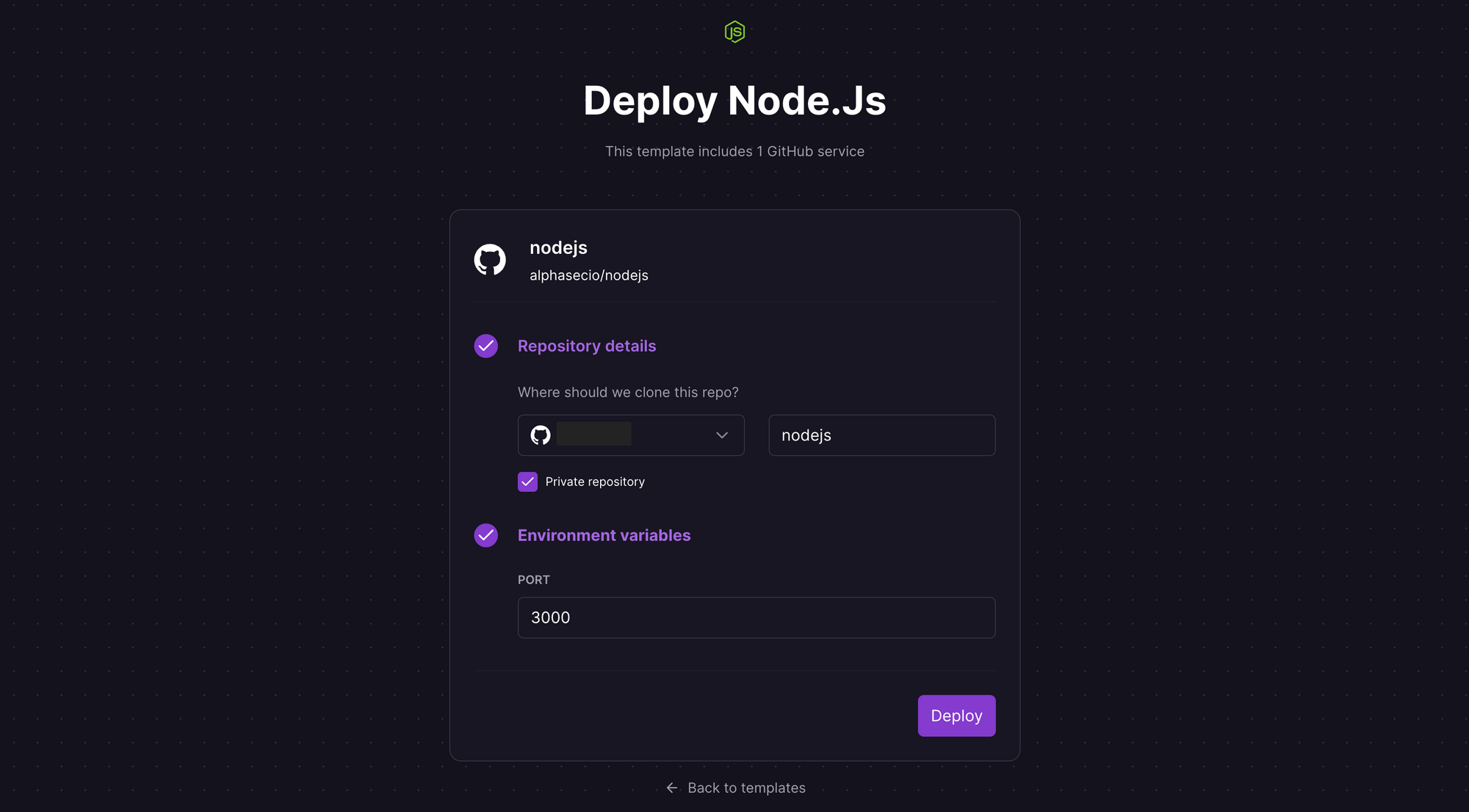How to Deploy a Node.js App on Railway
A brief guide to deploying a Node.js app on Railway.
In this post, we'll walk through the steps to deploy a Node.js app on Railway.
What is Node.js?
Node.js (sometimes referred to as NodeJS) is an open-source, event-driven JavaScript runtime environment, frequently used to build server-side web applications. It is built on top of the Google Chrome V8 JavaScript engine, making it extremely fast and efficient for real-time data-intensive applications. It also has a large and active developer community, with plenty of modules and libraries for easy integration and extensibility.
Deploy a Simple Node.js App on Railway
Let's deploy the Node.js app on Railway, a modern app hosting platform that makes it easy to deploy production-ready apps quickly. If you don't already have an account, sign up using GitHub, and click Authorize Railway App when redirected. Railway does not offer an always-free plan anymore, but the free trial is good enough to try this. Launch the Node.js one-click starter template (or click the button below) to deploy a Node.js app instantly on Railway.
You'll be given an opportunity to change the default repository name and set it private, if you'd like. Accept the defaults and click Deploy; the deployment will kick off immediately.

Once the deployment completes, a simple Node.js app will be available at a default xxx.up.railway.app domain - launch this URL to access the app. If you are interested in setting up a custom domain, I covered it at length in a previous post - see the final section here.
If you want to modify the app, here's a few things to understand first:
- The
index.jsfile only covers the default/route, which returns a simpleHello Worldoutput. To extend this, you'll need something like the Express web application framework - see an example here. - The
package.jsondefines the project metadata, scripts and dependencies. Update accordingly if you add other packages. - The app will listen on port
3000by default; update thePORTenvironment variable to change the default port.
In conclusion, deploying a Node.js app on Railway is a straightforward process, made even easier by the one-click template. Go forth and deploy!